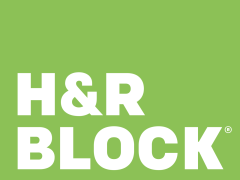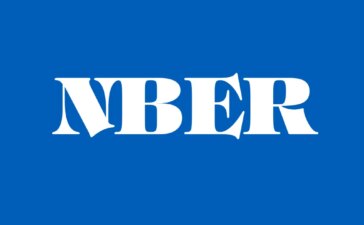When looking to grow your money, you may come across two low-risk investment options that sound similar but work quite differently: money market accounts (MMAs) and money market funds (MMFs). A money market account functions like a souped-up version of a savings account at your bank, offering higher interest rates while keeping your cash secure through insurance from the Federal Deposit Insurance Corporation (FDIC). A money market fund, on the other hand, operates like conservative mutual funds that invest in very short-term, low-risk assets.
The biggest differences come down to risk, returns and access to your money. Money market accounts average around 0.66% APY currently but can reach up to 4.00% or more at some banks, with your principal guaranteed safe. Money market funds earn higher base returns, starting above 1%, with some funds paying up to 4.00% or more. With a fund, you risk losing money if the market takes a severe downturn.
A money market account provides the right balance of safety and returns for most people looking to park their emergency funds or short-term savings. But if you’re comfortable exchanging a touch more risk for potentially higher yields, a money market fund could help your cash work harder.
In this article:
At a glance: Money market account vs. money market fund
Here’s how these two savings options stack up across key features and benefits to grow your money.
|
Money market accounts (MMAs) |
Money market funds (MMFs) |
|
|
Provider |
Banks and credit unions |
Investment firms and brokers |
|
Insurance |
FDIC or NCUA up to $250,000 |
SIPC up to $500,000 |
|
Minimum deposit |
Often $2,500 to $10,000 |
Usually $500 to $3,000 |
|
Access to funds |
Immediate with checks or debit card |
1 to 2 business days for transfers |
|
Current yields |
From 0.25% to 4.00% or more |
From 1% to 4.00% or more |
|
Risk level |
No risk to your principal |
Small risk of losing your money |
|
Fees |
$0 to $25 in monthly fees with optional fee waiver on most accounts |
0.08% to 1.00% of your balance in annual management fees (expressed as expense ratios) |
|
Tax treatment |
Returns federally taxed as regular income |
Returns from municipal funds exempt from federal taxes |
What is a money market account?
|
Pros |
Cons |
|
• Higher interest rates than traditional savings • Includes checks and debit card access • Offers seamless access to your money • Guaranteed returns with FDIC or NCUA protection • Easy to open and manage |
• Can require minimum deposits of $2,500 or more • May charge monthly fees if balance drops below minimum • Limit of 6 withdrawals at some banks |
A money market account (MMA) is a middle ground between checking and high-yield savings accounts. They’re offered by traditional banks, online banks and credit unions as a way to earn higher interest on cash you might need to access regularly.
These accounts work best when you have a larger sum to deposit but want to keep it liquid and protected. Many banks offer tiered interest rates — the more you deposit, the higher your rate. For example, you might earn 3.50% APY on balances of under $10,000 and 4.00% APY on anything above that threshold.
Managing a money market account is straightforward: deposit your money and start earning interest that typically compounds daily. Unlike standard savings that allow account transfers only, many money market accounts come with checks and a debit card. This makes them useful for keeping your emergency funds or saving for major purchases.
Online banks tend to offer the most competitive MMA rates with lower fees and minimum balance requirements. However, brick-and-mortar banks may provide better service if you prefer face-to-face banking or need to deposit cash regularly.
Dig deeper: Money market accounts vs. high-yield savings accounts: Here’s how they compare
What is a money market fund?
|
Pros |
Cons |
|
• Potentially higher returns than money market accounts • Low $500 minimum deposit (although some funds require $3,000) • Some funds earn tax-free interest • No limits on withdrawals • Professional money management |
• Small risk of losing money • Requires an investment account at a brokerage • Charges annual management fees |
A money market fund (MMF) is a mutual fund that pools money from many investors to buy safe short-term investments like government bonds and high-quality corporate loans. Money market funds aim to keep their share price steady at $1 to meet Securities and Exchange Commission (SEC) requirements while earning you money through interest payments.
To invest in a money market fund, you’ll need an account with a brokerage like Charles Schwab, SoFi, or Vanguard to buy into these funds. According to the SEC, there are about 289 MMFs in the U.S., divided into three main types, each offering different benefits:
-
Government funds. These invest almost entirely in U.S. Treasury bonds and other government assets. They offer the lowest risk but pay less interest because of their safety-first approach.
-
Prime funds. These invest in short-term corporate loans and bank debt to earn higher interest. They carry slightly more risk than government funds but are still quite conservative since they only invest in top-rated companies.
-
Municipal funds. These focus on loans to state and local governments. While they typically pay lower rates, the interest you earn is tax-free at the federal level. Depending on your state’s tax laws, you might avoid state taxes as well.
Opening a money market fund may require a smaller minimum balance than money market accounts. Many funds let you begin with $500 to $3,000. However, getting money in and out takes a bit longer than with a bank account: When you want to withdraw cash, you could wait up to three business days for the money to reach your linked checking account.
Most money market funds have annual management fees. You’ll typically find these fees in each fund’s details as a percentage titled expense ratio. For example, a fund with a 0.08% expense ratio would charge you $8 per year for every $10,000 you invest.
Some money market funds may also carry other fees, such as transaction fees or load fees when you buy or sell shares. Many major brokerages now offer no-load funds that eliminate these extra costs, but it’s worth checking the fund’s fee structure before investing.
Dig deeper: Best investing platforms for 2025: Low-cost options to put your money to work
4 key differences between money market accounts and funds
While both options offer ways to earn interest on your cash, there are several important differences that define how they work and how they can contribute to your financial goals.
1. Safety and insurance protection
Money market accounts come with ironclad protection through the Federal Deposit Insurance Corporation (FDIC) for banks or the National Credit Union Administration (NCUA) for credit unions. If your financial institution fails, the government steps in and guarantees you’ll get back every penny up to $250,000. This makes them ideal for emergency funds or large cash reserves you can’t risk losing.
Some brokerages that offer money market funds may provide you with protection from the Securities Investor Protection Corporation (SIPC), which works differently from bank insurance. SIPC protects against broker failure only — and not investment losses. If your investments lose value due to market movements, your account could drop below your original deposit amount without receiving compensation from the SIPC.
Dig deeper: 6 best ways to get more than $250,000 in FDIC insurance
2. Access to your money
With a money market account, your cash is available through checks, debit cards or bank transfers. Most online transfers within the same bank or credit union process immediately, and you can withdraw cash at ATMs or bank branches whenever needed. Transfers between institutions can take up to five days.
Most money market funds require an extra step to access your cash. You’ll need to sell your shares and wait two to three business days for the trade to settle and for the money to transfer to your bank account. However, while most money market funds don’t offer checks or debit cards, some brokerages are changing this. For example, the Fidelity Cash Management Account combines money market funds with checking features like ATM access, debit cards and free checks.
Dig deeper: Saving vs. investing: How to choose the right strategy to grow and protect your money
3. Tax implications
The interest you earn from a regular money market account counts as taxable income. You’ll receive a 1099-INT form each year that includes your earnings, and you’ll pay taxes on these earnings at your income tax rate. However, if you keep your MMA in a traditional IRA, you won’t pay taxes until you withdraw the money in retirement. In a Roth IRA, you’ll pay no taxes on the earnings when you withdraw during retirement.
Money market funds provide more tax flexibility. Municipal money market funds generate tax-free interest at the federal level, and sometimes at the state level too. This tax advantage can make their slightly lower yields more valuable for high-income earners that are in higher tax brackets. Like bank accounts, holding money market funds in a traditional IRA postpones taxes until withdrawal, while Roth IRA earnings come out tax-free in retirement.
Dig deeper: Best tax software for 2025: From free DIY platforms to assisted premium options
4. Investment approach
Money market accounts maintain a simple structure. Your bank sets a rate for your account that typically adjusts with market conditions — similar to how variable interest rates on savings accounts work. The bank handles everything, requiring no investment knowledge or decisions from you.
Money market funds actively buy and sell various investments like government bonds and corporate loans. Professional managers choose which investments to hold and when to make changes, aiming to maximize returns while keeping the fund’s share price stable at $1. This hands-on management explains their higher fees but also creates potential for better returns. You don’t need to be an investment expert to use these funds, but you should understand basic concepts like expense ratios and the risks that come with most investment products.
Dig deeper: Secure and steady returns: 7 best low-risk investments for retirees
Which option might work better for you?
Choosing between money market accounts and money market funds often depends on your financial goals, how soon you need the money and your comfort level with investing.
Choose a money market account if:
-
You’re building an emergency fund. Your money stays completely safe and easily accessible in money market accounts, making them a good option for establishing an emergency fund and handling unexpected expenses.
-
You’re saving for a near-term goal. Are you planning to buy a car or make a down payment within the next year or two? A money market account gives a clear earning structure while protecting your savings.
-
You want simple banking. If you prefer straightforward banking without worrying about investment concepts or market changes, a money market account would better fit your needs.
-
You frequently deposit or withdraw money. Money market accounts offer quick access through checks, debit cards and bank transfers, making them a great tool for active money management.
Choose a money market fund if:
-
You have extra cash in your investment account. You can put your idle money in your investment account to work by putting it in a market money fund that earns competitive returns.
-
You’re in a high tax bracket. Municipal money market funds provide tax-free income at the federal level, which helps minimize your tax liability on your earnings.
-
You won’t need immediate access. You can wait up to three days to transfer money from the money market fund to your checking account.
-
You’re comfortable with minimal investment risk. You understand and accept the small chance of losing money with market money funds in exchange for potentially higher returns.
Alternatives for low-risk savings
You have several options to consider beyond money market accounts and funds. High-yield savings accounts (HYSA) often match or beat money market account rates with lower minimum balances and monthly fees. Certificates of deposit (CDs) can provide guaranteed returns for a set period of time, though you’ll usually pay a penalty for early withdrawal.
Cash management accounts offer a modern hybrid approach that’s gaining popularity. These accounts combine higher yields with traditional banking features like checks, debit cards and mobile deposits. Some fintech companies like Wealthfront and brokers like Fidelity now offer these accounts with minimal fees and low balance requirements.
To choose the account that best fits your financial situation, you should:
-
Review APYs regularly. We’re currently in a declining rate environment, so the best account today may not offer the best APY in the near future. Experts project the Federal Reserve may cut rates by a half point in 2025. That’s why you should periodically compare your account’s yield with other options — especially if maximizing interest income is your priority.
-
Compare fees and minimum balances. Look for accounts with low or no hidden bank fees, like monthly maintenance charges, as well as manageable minimum deposit requirements. Online banks often offer more competitive rates and lower fees because of their lower overhead costs compared to traditional brick-and-mortar banks.
-
Research provider reputation. Choose reputable banks, credit unions or brokerages with strong customer reviews and reliable customer service. A good place to start your research is by looking them up at the Consumer Financial Protection Bureau (CFPB) or the Better Business Bureau (BBB).
-
Consult a financial advisor. Consider working with a financial advisor that can help you navigate the nuances of these accounts, align them with your financial goals and ensure you’re making the most of your money.
FAQs: Money market accounts vs. funds
Money market accounts and funds represent just two options in a broader landscape of savings and investment vehicles. Understanding how these accounts work alongside other financial tools can help you formulate a successful financial strategy for 2025.
Can I lose money in a money market fund if the market crashes?
Yes. While money market funds maintain relatively stable values, they lack FDIC insurance protection and could technically lose money in severe market conditions. For most investors though, the bigger risk comes from inflation eating away at your purchasing power over time. But if you’re concerned about security, it helps to avoid placing all your money in a single money market fund. Consider spreading your savings across different types of accounts, including high-yield savings, CDs and other vehicles. Remember that you receive up to $250,000 of FDIC protection per depositor, per bank. So you end up with more protection by putting your eggs in more than one basket. Learn more in our guide to getting more than $250,000 in FDIC insurance.
Your choice between saving and investing depends largely on when you’ll need the money and your comfort with risk. If your goals are within the next one to three years, then savings vehicles like money market accounts or CDs make more sense. For longer-term goals, investing could help you stay ahead of inflation and grow your wealth. Our comparison of saving versus investing breaks down the main differences between these two strategies.
What’s the difference between a money market account’s APY and a money market fund’s yield?
Money market accounts advertise annual percentage yields (APYs), which shows your total yearly return including compound interest – when you earn interest on your previous interest. For example, 4% APY on $10,000 earns about $816 over two years, not just $800, thanks to daily compounding. Money market funds use “7-day yields” instead, showing what you’d earn if the current rate stayed constant for a year without compounding. They use this shorter window because fund yields change frequently based on their investments. So a 4% 7-day yield might earn more or less annually as rates fluctuate.
Sources
About the writer
Yahia Barakah is a personal finance writer at AOL with over a decade of experience in finance and investing. As a certified educator in personal finance (CEPF), he combines his economics expertise with a passion for financial literacy to simplify complex retirement, banking and credit topics. He loves empowering people to make informed financial decisions that improve their everyday and long-term wellness. Yahia’s expertise has been featured on FinanceBuzz, FX Empire and EarnForex. Based in Florida, he balances his love for finance with freediving, hiking and underwater photography.
Article edited by Kelly Suzan Waggoner

















